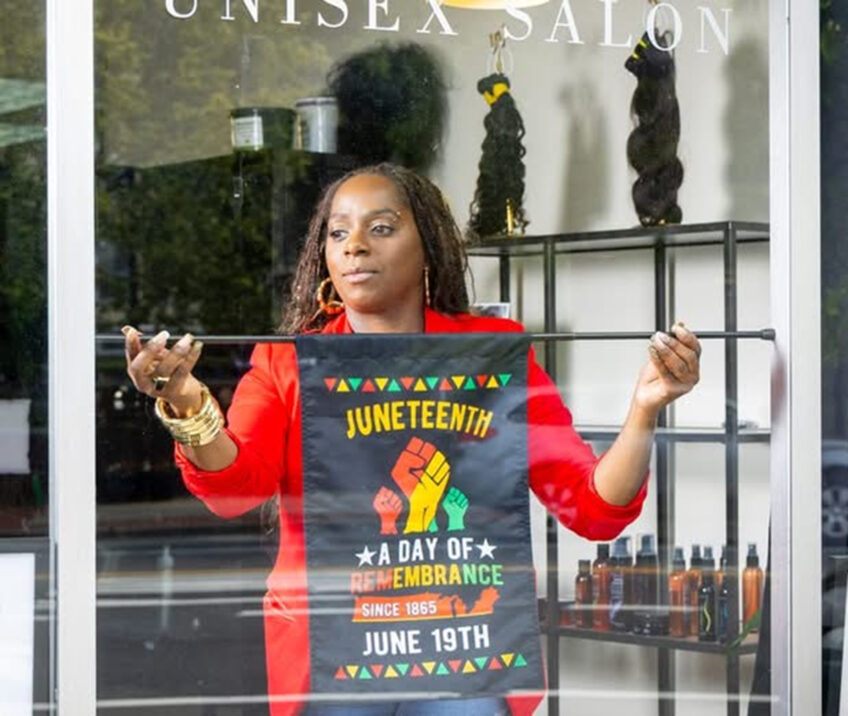Women of color have become the driving force of the rise in women-owned businesses in the United States. According to reports, they are doing so despite more obstacles and are driven to entrepreneurship as a result of structural limits in the traditional workforce.
The American Express OPEN, “The 2013 State of Women-Owned Business Report,” found that women of color are the majority owners of close to one-third of all women-owned firms in the nation. The report covers a period from 1997 to 2013 and details that during that time the number of female-owned firms in the United States grew by 59 percent, which is 1.5 times the national average.
The report tabbed women of color as a major contributor to this growth and found that:
• African American women-owned businesses grew by 258 percent
• Hispanic women-owned businesses grew by 180 percent
• Asian American women-owned businesses grew by 156 percent
• Native American and Alaska Native women-owned businesses grew by 108 percent
• Native Hawaiian and Pacific Islander women-owned businesses grew by 216 percent
The Center for American Progress in its recent “How Women of Color Are Driving Entrepreneurship,” report stated that increased access to capital has helped the number of women entrepreneurs grow substantially overall, but pointed out that women of color face more significant obstacles in starting their own business than their white counterparts. For one, the increased access to capital that has helped overall women entrepreneurs is not as readily available to entrepreneurs of color. Other obstacles include: limited access to mentors and exclusions from elite networks.
Turning to entrepreneurship has become a better option than fighting the biases in the traditional workplace such as the wage gap, according to the report.
The report pointed to statistics that show that white women make 78 percent of their white male peers’ wages, but African American women make 64 percent, Latina women make 53 percent and Asian women make 87 percent.
In addition, entrepreneurship helps women of color fulfill innovative desires, attain the goal of being their own boss, make more money than they could if working for someone else and spend more time with family.
While the reasons resonate with women entrepreneurs of color, the impact of their efforts is undeniable and only stands to grow.
American Express OPEN pointed out that, as of 2013, more than one in 10 women-owned business were owned by Hispanic women and these 944,000 firms totaled $65.5 billion in sales; African American women are both the fastest-growing segment of women-owned-businesses and the largest share of female business owners among women of color, at 13 percent; and African American women are starting businesses at a rate six times the national average, with their 2.7 million firms generating $226.8 billion in annual revenue and employing almost 1.4 million people.
The Center for American Progress leaders call for supporting female entrepreneurs as a way to lift women of color out of poverty and help the economy grow.
“Entrepreneurial women of color are a critical part of our economy, and they have already demonstrated their ability to generate record amounts of revenue, employ people in their communities, and be a tool of economic mobility for women of color and their families,” wrote “How Women of Color Are Driving Entrepreneurship” author Farah Z. Ahmad, a policy analyst at the Center for American Progress. “While better access to funding streams, diverse industries, and networks are in short supply for women of color, the entrepreneurial spirit is not. Women, and women of color in particular, face a wide array of work-related obstacles, but their participation as employees, business owners, and consumers is fundamental to the success of not only their own families but also to the success of the U.S. economy.”
Organizations such as the Women’s Business Enterprise National Council, an organization started in 1997 that helps women business owners get government and big contracts, still emphasize traditional methods of obtaining business, such as networking and partnerships.
Council CEO Pamela Prince-Eason has been widely quoted in the media stressing the need for women business owners to work even harder than they do now if they want more contracts with big corporations and the government.
Prince-Eason has even gone as far as to say that women can hurt themselves in business meetings because they approach males and take a subservient position and have warmer personalities. She calls on women to approach every business meeting in a straightforward professional manner and treat it as a strictly business transaction.
Natalie Madeira Cofield, president and CEO of the Capital City African American Chamber of Commerce and founder of women in business collective Walker’s Legacy, credited the ability of women of entrepreneurs to find such growing success in a 2013 Forbes article, “Minority Women Entrepreneurs: Go-Getters Without Resources.”
Cofield said that lack of social capital and access to the white-male dominated business world are continuing challenges for women entrepreneurs of color. She concluded that to be successful women they must increase participation with women’s associations, collectives and trade groups to increase social capital and broader business relationships.






